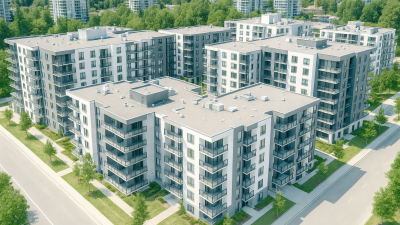Calgary's real estate market has been witnessing a significant uptick in both pricing and activity levels. As of recent reports, the city is experiencing a seller's market with consistent price growth across various property types. This rise in market activity aligns with escalating rental rates, making it challenging for many residents to find affordable housing options. According to the Calgary Real Estate Board, the demand in the housing sector has been strong, leading to a competitive market environment where home prices continue to rise despite economic uncertainties.

In a bold move to address affordability and diversify housing options in Calgary, the local government, alongside Alberta’s Premier Danielle Smith, has announced a citywide rezoning strategy known as the Missing Middle Housing Initiative. This initiative, following in the footsteps of Vancouver's 2023 strategy, aims to transform Calgary's housing landscape by allowing more flexibility in developing duplexes, townhomes, and low-rise apartments in areas traditionally dominated by single-family homes.

The primary goal of this initiative is to make housing more accessible and affordable for Calgarians by increasing the supply of moderately priced homes. The rezoning will reduce bureaucratic red tape, allowing developers to propose and build middle housing types without the usual prolonged approval processes. Despite the streamlined approach, projects will still undergo necessary assessments and community consultations to ensure they align with local needs and standards.
The introduction of the Missing Middle Housing Initiative is set to reshape presale developments in Calgary. As noted by Taylor Musseau, EVP Sales and Marketing, Partner at MLA Canada’s Okanagan office, Calgary’s growth has historically been driven by greenfield, suburban development. The new initiative seeks to fill the gap in housing types, particularly in the inner city, by promoting densification and product diversification.

"Calgary's decisions to implement these rezoning measures are quite different from Vancouver's due to the availability of developable land. However, the essence of facilitating diverse housing forms through blanket rezoning aims to provide more affordable housing options and stimulate market competition," states Musseau. She further explains that this regulatory shift will create fertile ground for developers but will also introduce heightened competition within the market.
Developers planning presale projects will now need to be deeply aware of product-market fit. The success of future developments will largely depend on aligning with market demands and understanding the preferences of target demographics. The broader spectrum of housing options may lead to a stabilization or even a potential decrease in housing prices over time, depending on how supply adjusts to meet demand.
As Calgary embraces this progressive housing strategy, the city is prepared for significant changes in its cityscape. For potential homebuyers, especially those struggling with current market prices, this could mean more opportunities to enter the housing market. Developers, on the other hand, must navigate this new environment with strategic insight, balancing innovation in housing types with the economic realities of a diverse and expanding city.
Ultimately, the Missing Middle Housing Initiative represents a pivotal moment for Calgary, potentially setting a new standard for urban development and affordability in major Canadian cities. As the city adapts to these changes, the real estate market will undoubtedly be a critical area to watch.



